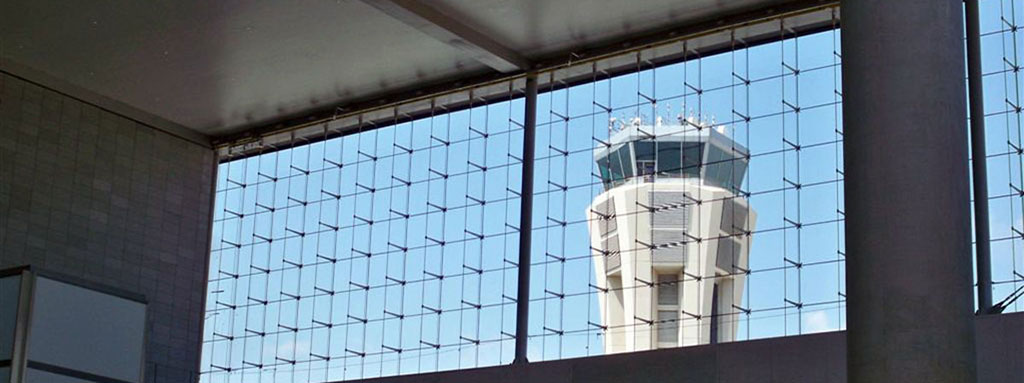
Strictly speaking, a control tower is nothing more than a structure whose task is to place an air traffic controller’s eyes at a certain height. Essentially, both ends of the runway it services should be clearly visible without any obstacles at that height.
Control towers have become the real hallmarks of the airports they belong to and the cities where they are located.
Only that? Why then are they usually considered as complex buildings that are difficult to conceive and design?
Firstly, because of their location and the relationship they have with the airfield of the aerodrome in which they are located. Their exact position is usually arrived at a through a thorough visibility study to ensure a view of aircraft approach manoeuvres, take-offs and landings, of course, as well as aircraft taxiing along taxiways until they reach the parking apron. However, these buildings, which by definition are tall, cannot interfere with the runway’s obstacle limitation surfaces. Hence, a difficult balance always has to be struck between closeness to the airfield and respect for its physical and radio electric limitations.
A control tower is an extremely accurate building. The contrary would be expensive and therefore rather lax.
Secondly, towers have to be stable and secure. I am not only referring to structural concepts or intrusion control here, which of course are important. I am referring, above all, to stability from the standpoint of service.
What is truly complex about a control tower are its facilities. In addition to an office building’s usual facilities, we have to add all kinds of air navigation equipment, which necessarily have to be duplicated to ensure redundancy. Above all, a tower cannot be left without electric power. It has to be equipped with double power supply connections, generating sets, UPS and, in general, a plan B (and even a plan C) should any kind of incident of this type happen within or beyond the airport grounds.
A control tower is a robust, redundant building. The contrary would be unsafe and ultimately jeopardise the safety of many people.
Lastly, a control tower has to be unique and iconic. Today terminal architecture has become monotonous and immediate. Large metal structures bear huge curtain walls as elements that make up practically all airports today in a competition to reach the most successful architectural challenge. At the same time, control towers have become the real hallmarks of the airports they belong to and the cities where they are located. Safety, security, robustness, accuracy, etc. are essential elements to design them, as is locating them carefully in the place that is to house them. At the end of the day, they are no more than yet another programme, which should also provide a response to the old traditional interplay between an artefact and the place where it is located. Of course it is not easy to fulfil all of the above and, in addition, find a sensible singularity that does not convert it into a simple design whim.
A control tower has to be unique and singular. The contrary would be to turn it into “non-architecture”. Who then would see it as a key point of reference in the collective memory of millions of users?


